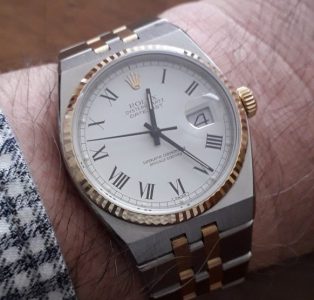After having disposed of my old Precision and more recent GMT 2 last year, I was determined to have at least one Rolex in my collection. However, as noted in a previous article, I can be very funny about this brand! So, this time I was going to be pretty discerning and try for a vintage chronograph or triple date. However, I soon realised that I had missed that boat, with prices for good examples having shot up hugely over the past year or two. What to do? Well, a germ of an idea was forming – whilst at the same time wracking my brains to recall a well-known collector who was pretty keen on Rolex’s quartz models. After scouring my archives, I eventually found an article by James Dowling in an issue of Watches of Switzerland’s Caliber magazine. In this piece, James discusses his white gold Rolex 5100 – Rolex’s first quartz model. These are now super rare (and very expensive), so my ambitions would have to be a little more modest and therefore would focus on later models.
After further research, I concluded that an example of this much-maligned electric-powered variety (at least by some aficionados) was seriously worth considering. The case and bracelet design was so-cool Seventies, and the later Oysterquartz versions could have come off a Star Trek set – think Enterprise shuttle shape! Additionally, no winding or accuracy issues and it would not break the bank, plus, all from one of the most iconic watch brands!
After having trawled the internet, it was clear that the most desirable Oysterquartz models would be the later all-gold Day-Date models, however, these are quite expensive and I am not too bothered about having a day notification. It is the date that sometimes eludes me, and if it gets to the stage when I do not know what day it is, then an institution beckons its hoary finger!
The options for the Datejust are in fact just stainless steel (ref 17000), bi-metal in yellow gold (ref 17013) and bi-metal with a white gold bezel (ref 17014). The all-stainless one, for me, would just not be classy enough, and the white gold really would look too like this, so, the sensible compromise seemed to point to the 17013 with gold fluted bezel, crown and inserts to the bracelet. Drilling down further, I discounted all dial options but for the white dialled types with Roman numerals. These come in two types, in either applied gold or printed in black. The latter type are known as a Buckley dials and that is what I wanted!
Anyway, after further internet scanning I came across a likely candidate at Watches & Jewellery of Bond Street (aka Watchcenter). This was a mint example from 1981 with box and papers. The price was a solid but not unreasonable £5,700. As I had bought an expensive Patek from them a few years before, I was confident in the offering, so, after a little more “discussion” about the price, I agreed to buy. I received the watch a few days later and it was all it had been advertised to be, so I was very gratified. Also, in the flesh, it is actually more impressive!
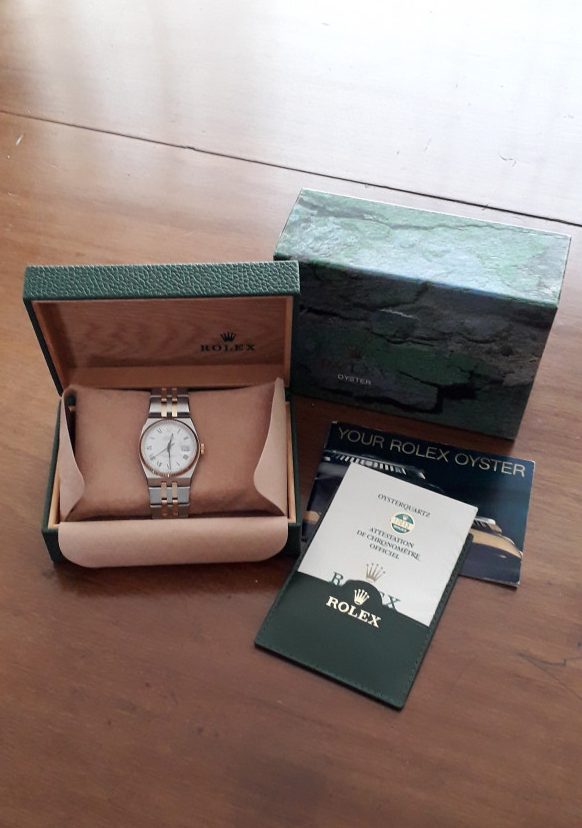
So, what is the story behind this model. Well, Rolex had been experimenting with quartz movements way back in the fifties and in fact took out a patent in 1952. However, by the early to mid-sixties serious competition was looming from Japan, so Rolex – along with a fair number of other Swiss brands, banded together to develop their own alternative. This resulted in a prototype quartz movement being ready in 1966 and was the Beta 21. After further development it was achieving incredible accuracy figures of +/- 0.003 seconds per day – so, around a minute per year. Rolex were the first to launch this in 1970 with their gold 5100 models followed by no less than Patek Philippe and Omega. However, they were all pipped to the post as Seiko had offered their Astron in 1969, with Casio, Citizen and Orient Star also following suit. The 5100 was a typically Seventies design, somewhat angular with an integrated bracelet. At this juncture it is worth mentioning that the lead designer of this watch was Gerald Genta, and I feel his influence definitely carried over into later variants.
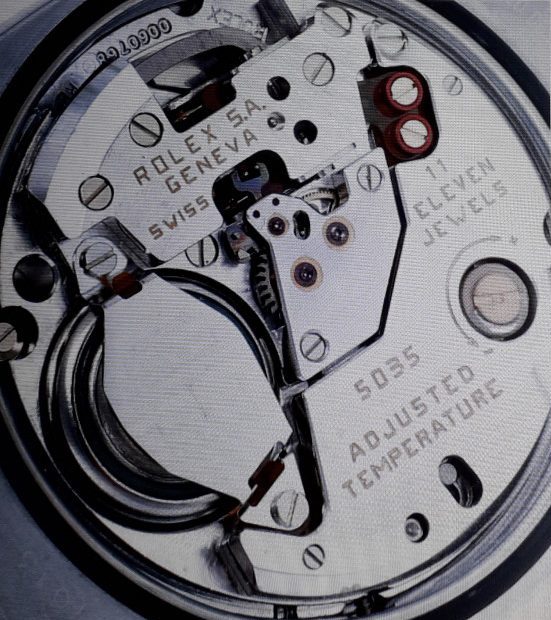
The 5100 had a launch limited edition of only 1000 (all sold on pre-order), with supposedly 900 in yellow gold and 100 in white gold. It is likely that some further production continued, but despite the apparent success, Rolex decided to cease the model in 1972. They then concentrated on designing their own in-house movement to an even higher quality than the Beta 21. This resulted in calibers 5035 and 5055 emerging in 1977. These would power two Oysterquartz models, the Datejust, and Day-Date respectively. The movement had 11 jewels, oscillated at 32 khz and boasted some decoration in the form of Geneva stripes. From 1979 the quartz crystal was altered in order to improve accuracy further. This allowed the models (known as Mk 2) to become COSC chronometer certified and this aspect was now noted on the dial. The two models were produced for some 25 years – ending officially in 2001 (a run-off continued to 2003) with a production level believed to be around 25,000. As mentioned earlier, a wide variety of case/dial materials were used (more so for the Day-Date), but for me the bi-metal Datejust would do, along with that Buckley dial. Regarding the dial – white with black printed/painted Roman numerals which do not invert at the bottom, comparatively few were made I feel. Incidentally, the name comes from a well-known vintage New York watch dealer called John Buckley, who apparently liked these dials for his clients so ordered them more than most.
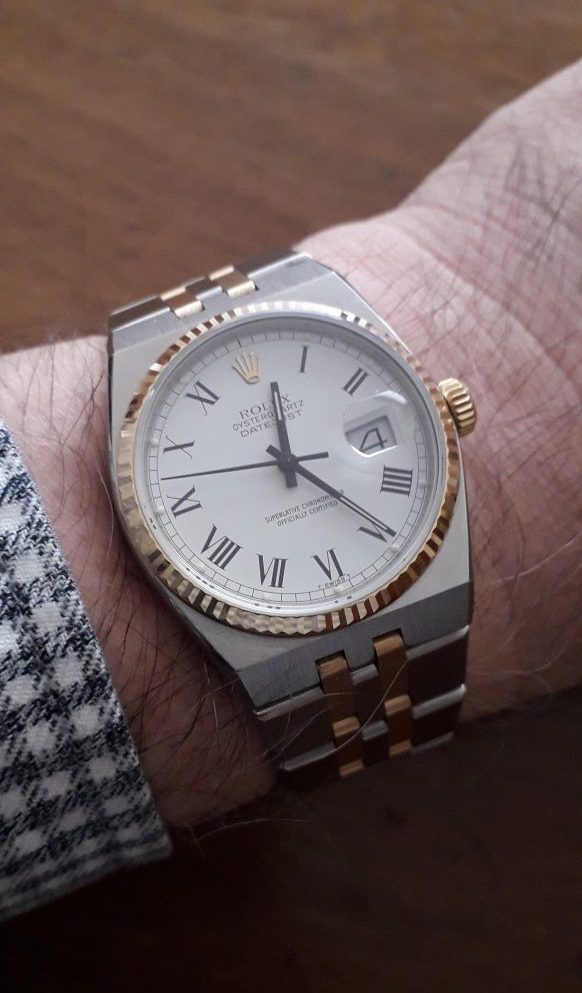
There is probably not much more to say really. Rolex certainly needs no introduction, and the watch is pretty much is what you see. At 36 mm and some 12 mm in height it will fit and look good on most wrists. The dial on my watch looks classic and classy with the usual cyclops date lens. Although the case was quite modern for its day, the fluted bezel again brings some “dress” sparkle – particularly in gold.
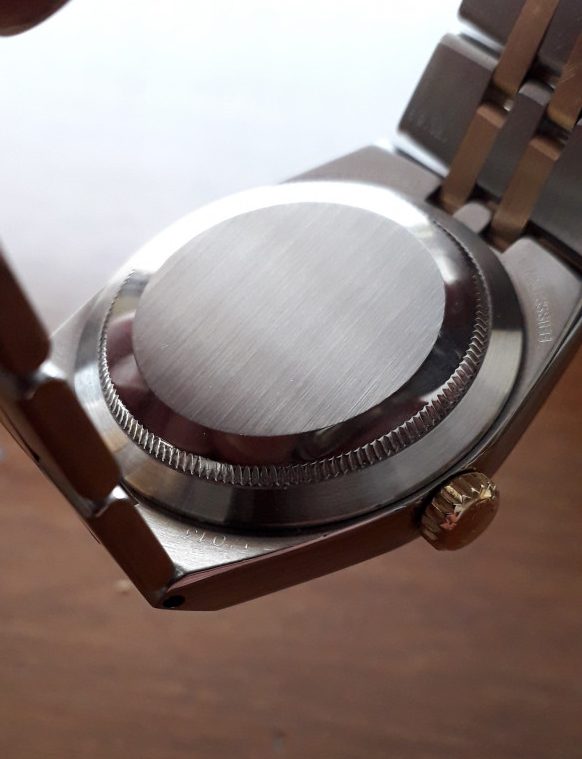
The screwed-down case back is solid with no decoration or script, so, is pretty boring! The model/movement details etc are however etched in tiny writing on what would be the underside of the lugs, which in this case do not exist as such. The bracelet is well-designed and morphs seamlessly from the case. It too is pretty classy – particularly in bi-metal and a comfortable wear to-boot. There is sufficient adjustment on the clasp.
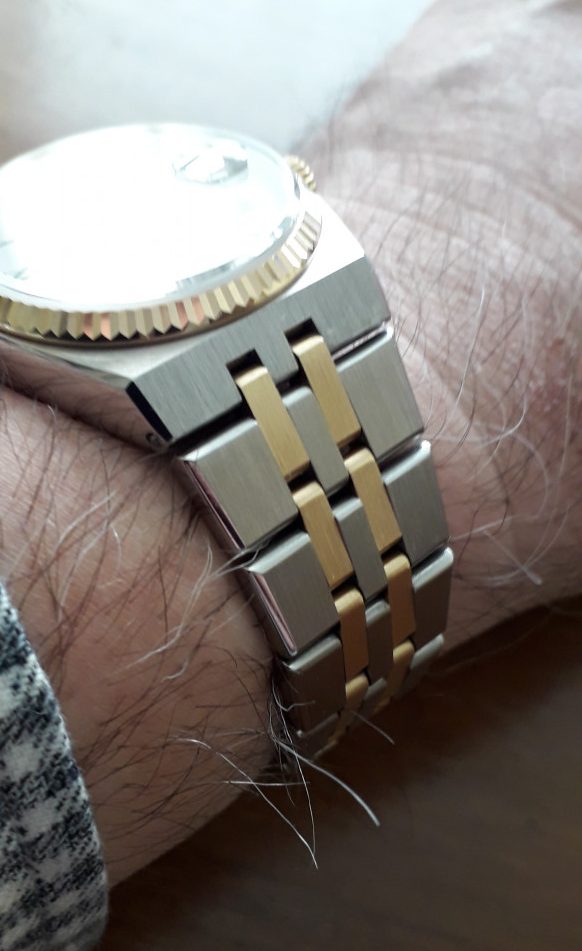
In conclusion, of its type it is a cracker of a watch and personally I would not change a thing! Attractive, well-designed, comfy, reliable and from a premier brand. Also, not too dear – but for how long? The mechanical versions are legion on the second-hand market and can be at a similar price really, but the range in quality is marked so caveat emptor! However, the quartz ones are rarer and in some ways are easier to live with of course, with no winding issues or little other worries. So, could these be the new Daytonas, Submariners and GMTs of tomorrow in terms of appreciation and dare I say speculation? I will leave all that hanging!
Words & Images (except quartz movement image – internet/unknown) – The Writer
Rating: 5/5 (another 100%!)

